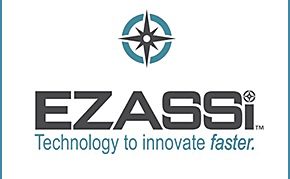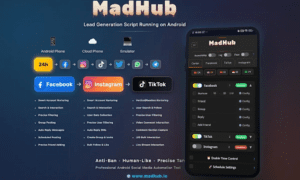Blockchain technology has been making waves in the digital world, revolutionizing various industries and challenging traditional systems. With its decentralized nature and unparalleled security features, blockchain holds immense potential to shape the future of our digital landscape. In this blog post, we will delve deep into the possibilities offered by blockchain technology, exploring how it can transform sectors such as finance, healthcare, supply chain management, and more. Get ready to unlock the doors to a digital era where transparency, efficiency, and trust reign supreme!
Introduction to Blockchain Technology
Blockchain technology is a revolutionary concept that has been gaining popularity in recent years. It first gained mainstream attention as the underlying technology behind cryptocurrencies like Bitcoin, but it has evolved to have much broader applications and potential.
At its core, blockchain is a distributed and decentralized digital ledger that records transactions across a network of computers. This means that instead of having one central authority controlling the data, it is stored on multiple computers, making it almost impossible for the data to be corrupted or hacked. Each transaction is recorded as a “block” on the chain, creating an unchangeable and transparent record of all previous transactions.
Understanding the Basics: What is a Blockchain?
Blockchain technology has been making waves in recent years, with many hailing it as a revolutionary breakthrough that will transform various industries. But what exactly is blockchain and how does it work? In this section, we will delve deeper into the basics of blockchain to help you understand its fundamental features and functionalities.
At its core, a blockchain is essentially an electronic ledger or database that stores information in a secure and immutable manner. This means that once data is recorded on the blockchain, it cannot be altered or deleted, ensuring trust and transparency in transactions.
The term “blockchain” comes from the way data is stored on this digital ledger – in blocks linked together like a chain. Each block contains transactional data along with a unique code called a “hash” that identifies and connects it to the previous block. This sequential linking of blocks creates an unbreakable record of all transactions ever made on the network.
One crucial aspect of blockchain technology is its decentralized nature. Traditional databases are typically centralized, meaning they are controlled by one central authority such as banks or governments. However, in a blockchain network, no central authority controls the database. Instead, it operates through a network of computers called nodes that work together to validate new blocks before adding them to the chain.
This decentralization not only eliminates any single point of failure but also ensures transparency and security by distributing control among multiple parties rather than one entity having complete control over the network.
Another key feature of blockchain technology is its use of cryptography. This involves the use of complex mathematical algorithms to secure data on the blockchain, making it virtually impossible for anyone to tamper with or hack the network.
The combination of decentralization and cryptography creates a system that is not only secure but also transparent. All transactions recorded on the blockchain are visible to all network participants, ensuring trust and eliminating the need for intermediaries.
How Does it Work?
Blockchain technology is a complex concept that can seem intimidating at first glance. However, at its core, it is simply a decentralized digital ledger that records transactions in a secure and transparent manner. This unique feature has the potential to revolutionize various industries and transform the way we interact and conduct business online.
To understand how blockchain works, let’s break down its key components:
1. Distributed Ledger: Unlike traditional databases where data is stored in a central location, blockchain uses a distributed ledger system where information is replicated across multiple nodes or computers within a network. This means there is no single point of failure, making it almost impossible to manipulate or hack the data.
2. Blocks: Each transaction on the blockchain is grouped together and recorded as a block. A block contains various pieces of information such as transaction details, timestamp, cryptographic hash (a unique code derived from the data), and reference to the previous block.
3. Cryptography: Blockchain uses advanced cryptography techniques to ensure security and immutability of the data. The use of hashes makes it extremely difficult for anyone to alter or delete any transaction on the blockchain without affecting all subsequent blocks.
4. Consensus Mechanism: Before adding new transactions onto the blockchain, there needs to be an agreement among all nodes in terms of which transactions are valid and should be added to the ledger. This is achieved through various consensus mechanisms such as Proof-of-Work (PoW) or Proof-of-Stake (PoS).
5. Decentralization: Traditional systems have a central authority that controls and verifies transactions. In contrast, blockchain is decentralized, meaning there is no central authority or intermediary. Instead, the consensus mechanism allows for a distributed network of nodes to validate each transaction.
6. Smart Contracts: In addition to recording financial transactions, blockchain also has the ability to execute programmable contracts called smart contracts. These contracts are self-executing and automatically enforce the terms and conditions agreed upon by all parties, without the need for intermediaries.
As new blocks are added with each validated transaction, the blockchain becomes longer and more secure. This makes it nearly impossible for anyone to tamper with any previous transactions since they would have to recalculate all subsequent hashes on the chain.
Benefits of Blockchain Technology
Blockchain technology has gained significant attention in recent years for its potential to revolutionize industries and transform the way we conduct transactions. While it is often associated with cryptocurrencies like Bitcoin, its applications are far-reaching and extend beyond just financial transactions. In this section, we will explore some of the key benefits of blockchain technology and how it can shape the future of digital systems.
1. Decentralization:
One of the most prominent advantages of blockchain technology is its ability to decentralize data. Unlike traditional systems that rely on a central authority to manage and store information, blockchain operates through a network of interconnected nodes where each participant has a copy of the entire ledger. This decentralized structure makes it nearly impossible for any single entity to manipulate or control the data, promoting transparency and immutability.
2. Enhanced Security:
In addition to decentralization, blockchain offers enhanced security measures that make it difficult for hackers or cybercriminals to compromise the system. The use of cryptographic algorithms ensures that data stored on the blockchain cannot be altered or tampered with without detection, providing an extra layer of protection against fraud and cyber attacks.
3. Improved Traceability:
Another significant benefit of blockchain technology is its ability to track every transaction recorded on the ledger back to its origin. Since each block in the chain contains a unique cryptographic code linking it to previous blocks, any modification made would break this chain making it easy to identify and trace fraudulent activities.
Real World Applications of Blockchain
1. Supply Chain Management:
Blockchain technology has the potential to revolutionize supply chain management by providing a transparent, secure, and efficient way to track the journey of goods from their origin to their destination. This can eliminate the risk of counterfeit products, reduce paperwork and streamline processes, leading to cost savings for businesses. For instance, Walmart is using blockchain technology to trace the journey of mangos from farm to store shelves.
2. Financial Services:
The financial sector is one of the first industries that embraced blockchain technology. With its decentralized nature, blockchain allows for faster and cheaper transactions compared to traditional banking systems. It also offers a more secure way to store sensitive financial data. Companies like JP Morgan are already utilizing blockchain for cross-border payments, while others like Visa are exploring its use in improving their payment infrastructure.
3. Healthcare:
In healthcare, patient data security is crucial. Blockchain technology provides a tamper-proof and transparent system for storing patient records securely while allowing access only by authorized individuals. This eliminates the risk of medical fraud and improves the efficiency of sharing medical information between healthcare providers.
4. Voting Systems:
Blockchain has been touted as a potential solution for enhancing transparency and security in voting systems across the world. By using blockchain-based digital voting platforms, we can ensure that every vote is recorded accurately with no possibility of fraud or tampering.
Challenges and Potential Limitations
While blockchain technology holds immense potential for revolutionizing the digital landscape, it also comes with its own set of challenges and limitations. In this section, we will explore some key obstacles that may hinder the widespread adoption of blockchain technology.
1. Scalability Issues:
One of the major challenges for blockchain technology is scalability. Currently, most blockchains have a limited capacity to process transactions at any given time. As more users join the network and the number of transactions increases, there can be delays in transaction processing and higher fees. This is a significant hurdle for businesses looking to implement blockchain solutions on a large scale.
2. Interoperability:
Another limitation of blockchain technology is interoperability or the ability to communicate with other systems seamlessly. While there are efforts to develop standards for interoperability between different blockchains, it remains a complex task due to varying protocols and networks.
3. Energy Consumption:
Blockchain technology relies on a network of computers continuously solving complex mathematical equations in order to validate transactions. This requires a significant amount of energy consumption, leading to environmental concerns and high operating costs.
4. Regulatory Uncertainty:
As blockchain technology continues to evolve at a rapid pace, governments around the world are still trying to wrap their heads around it and determine how best to regulate it. This uncertainty creates hesitation among businesses and investors when considering using or investing in blockchain-based solutions.
The Future of Blockchain: Predictions and Possibilities
The emergence of blockchain technology has caused quite a stir in the tech world, with its potential to revolutionize industries and transform our future digital landscape. While it may still be in its early stages, many experts believe that blockchain has the power to disrupt traditional systems and open up endless possibilities for innovation. In this section, we will delve into some predictions and possibilities for the future of blockchain.
1. Disrupting Traditional Industries
One of the most talked-about possibilities of blockchain is its ability to disrupt traditional industries such as finance, healthcare, and supply chain management. With its decentralized nature and secure transactions, blockchain has the potential to eliminate intermediaries and increase efficiency in various processes. For example, in finance, blockchain can streamline cross-border payments by eliminating wire transfer fees and reducing transaction time from days to minutes. Similarly, in healthcare, it can improve data management and ensure patients’ electronic health records are tamper-proof.
2. Smart Contracts Revolutionizing Business Operations
Another prediction for the future of blockchain is the widespread adoption of smart contracts. Smart contracts are self-executing computer programs that automatically enforce terms agreed upon by parties on a distributed network like a blockchain. This eliminates the need for intermediaries such as lawyers or banks since transactions can be automatically triggered once certain conditions are met without any human intervention. This could greatly benefit businesses by simplifying their operations and reducing costs associated with legal agreements.
3.Increased Security Measures
Security has always been a major concern when it comes to digital transactions. Many experts believe that blockchain has the potential to provide a secure and transparent way of conducting transactions. With its decentralized ledger, blockchain can prevent fraud and tampering of data as each transaction is recorded and linked to the previous one, making it difficult to alter without detection.
4. Decentralization of the Internet
The current internet landscape is dominated by centralized servers owned by big corporations. This has led to concerns about data privacy and control over user data. Blockchain technology offers a potential solution to this problem with its decentralized nature. Rather than having one central server controlling all user data, blockchain allows for distributed storage of data, giving users more control over their own information.
5. Increased Use in Government Operations
Governments are often associated with slow bureaucracy and outdated systems. However, many experts believe that blockchain has the potential to transform government operations by increasing transparency and efficiency. For example, using blockchain for voting systems could eliminate issues like voter fraud and hacking, ensuring fair elections.
Conclusion
The potential of blockchain technology for a digital future is vast and exciting. From revolutionizing financial transactions to securing personal data, this emerging technology has the power to transform various industries. As we continue to see more advancements in its development, it is clear that blockchain will play a crucial role in shaping our digital landscape. It is an ever-evolving field with endless possibilities, and it will be fascinating to witness how it changes the world we live in today. So let us embrace this technology and look forward to the endless opportunities it presents for our digital future.



































